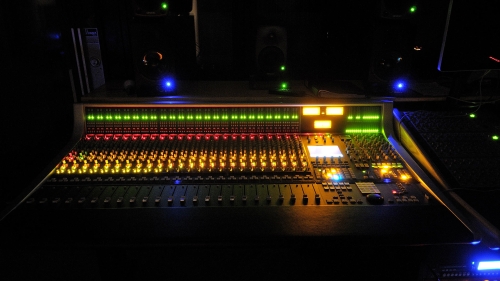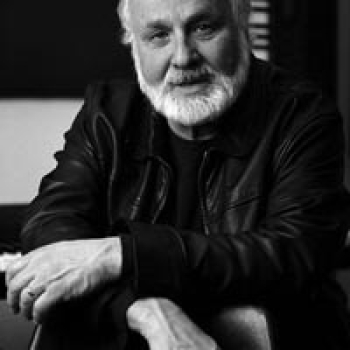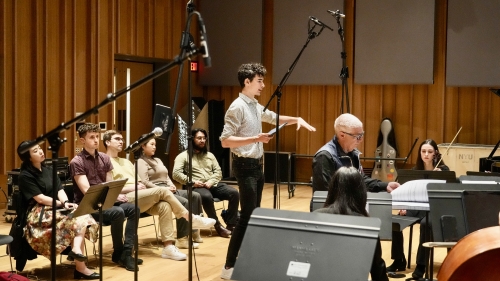

Morton Subotnick is one of the pioneers in the development of electronic music and an innovator in works involving instruments and other media, including interactive computer music systems. Most of his music calls for a computer part, or live electronic processing; his oeuvre utilizes many of the important technological breakthroughs in the history of the genre. The work that brought Subotnick celebrity was Silver Apples of the Moon. Written in 1967 using the Buchla modular synthesizer (an electronic instrument built by Donald Buchla utilizing suggestions from Subotnick and Ramon Sender), this work contains synthesized tone colors striking for its day, and a control over pitch that many other contemporary electronic composers had relinquished.
There is a rich counterpoint of gestures, in marked contrast to the simple surfaces of much contemporary electronic music.There are sections marked by very clear pulses, another unusual trait for its time.Nonesuch Records, marking the first time an original large-scale composition had been created specifically for the disc medium - a conscious acknowledgment that the home stereo system constituted a present-day form of chamber music, commissioned Silver Apples of the Moon.
Subotnick wrote this piece (and subsequent record company commissions) in two parts to correspond to the two sides of an LP. The exciting, exotic timbres and the dance inspiring rhythms caught the ear of the public -- the record was an American bestseller in the classical music category, an extremely unusual occurrence for any contemporary concert music at the time.It has been re released on the Wergo CD label with The Wild Bull.
The next eight years saw the production of several more important compositions for LP, realized on the Buchla synthesizer:The Wild Bull, Touch, Sidewinder and Four Butterflies.All of these pieces are marked by sophisticated timbres, contrapuntal rich textures, and sections of continuous pulse suggesting dance. In fact, Silver Apples of the Moon was used as dance music by several companies including the Stuttgart Ballet and Ballet Rambert, and The Wild Bull, A Sky of Cloudless Sulfur and The Key to Songs, have been choreographed by leading dance companies throughout the world.
In 1975, fulfilling another record company commission, (this time, Odyssey) Subotnick composed Until Spring, a work for solo synthesizer. This work utilized changes in settings, which Subotnick made in real time on the synthesizer, that were stored as control voltages on a separate tape, enabling him to duplicate any of his performance controls, and to subsequently modify them if he felt the desire to do so. While the use of control voltages was nothing new, it suggested to Subotnick a means to gain exact control over real-time electronic processing equipment.
The next step in Subotnick's use of control voltages was the development of the "ghost" box. This is a fairly simple electronic device, consisting of a pitch and envelope follower for a live signal, and the following voltage controlled units: an amplifier, a frequency shifter, and a ring modulator. The control voltages for the ghost box were originally stored on a tape, updated now to E-PROM. A performer whose microphone signal is sent into the ghost box, can then be processed by playing back the pre-recorded tape or E-PROM. As neither the tape nor E-PROM produce sound, Subotnick refers to their sound modification as a "ghost score". By providing the performer with exact timings, co-ordination between performer and the ghost score is controlled.
Two Life Histories(1977) was the first piece involving an electronic ghost score; the bulk of Subotnick's output for the next six years was devoted to compositions involving performers and ghost scores.Some of the more notable works in this series include: Liquid Strata (piano), Parallel Lines (piccolo accompanied by nine players), The Wild Beasts (trombone and piano), Axolotl(solo cello), The Last Dream of the Beast (solo voice) and The Fluttering of Wings (string quartet). The subtlety, sophistication and control over real-time electronic processing that Subotnick demonstrated in these innovative works secured his reputation as one of the world's most important electronic music composers.
Subotnick reached the apex of live electronic processing in his work Ascent Into Air (1981), written for the powerful 4C computer at IRCAM. This piece involved many of the techniques, which Subotnick had developed in his ghost scores. In addition to the processing normally available to him with his ghost boxes, Subotnick was able to spatially locate sounds in a quadraphonic field and to modulate the timbres of the instruments. But perhaps the most significant aspect of this work is its use of live performers to control the computer music; the live performers, in effect, serve as "control voltages" to influence where a sound is placed, how it is modulated and by how much, etc. -- the reverse situation of the ghost score compositions. Even more remarkable is the ability of traditional musical instruments to control computer-generated sounds. The sophistication of this control is currently unavailable using the commercial MIDI devices, which many electronic musicians, including Subotnick, favor today. Since 1985, Subotnick has used commercially available MIDI gear in works such as The Key to Songs, Return and "all my hummingbirds have alibis". His more recent pieces are also marked not only by pulse driven rhythms, but also by clear diatonic melodies and harmonies.
In addition to music in the electronic medium, Subotnick has written for symphony orchestra, chamber ensembles, theater and multimedia productions. His "staged tone poem" The Double Life of Amphibians, a collaboration with director Lee Breuer and visual artist Irving Petlin, utilizing live interaction between singers, instrumentalists and computer, was premiered at the 1984 Olympics Arts Festival in Los Angeles.
The concert version of Jacob's Room, a monodrama commissioned by Betty Freeman for the Kronos Quartet and singer Joan La Barbara, received its premiere in San Francisco in 1985. Jacob's Room, Subotnick's multimedia opera (directed by Herbert Blau with video imagery by Steina and Woody Vasulka, featuring Joan La Barbara), received its premiere in Philadelphia in April 1993 under the auspices of The American Music Theater Festival.The Key to Songs, for chamber orchestra and computer, was premiered at the 1985 Aspen Music Festival. Return, commissioned to celebrate the return of Haley's Comet, premiered with an accompanying sky show in the planetarium of Griffith Observatory in Los Angeles in 1986. Subotnick's recent works -- among them Jacob's Room, The Key to Songs, Hungers, In Two Worlds, And the Butterflies Begin to Sing and A Desert Flowers-- utilize computerized sound generation, specially designed software, and "intelligent" computer controls which allow the performers to interact with the computer technology.
Subotnick's recent works include: 5 CD ROMS and an interactive ‘Media Poem’, Intimate Immensity, premiered at the Lincoln Center Festival in NY (1997). The European premiere (1998) was in Karlsrhue, Germany. Echoes from the Silent Call of Girona for string quartet and CD-ROM was premiered (1998) in Los Angeles by Southwest Chamber Music.
In the Spring of 2001, Mode records released a CD and DVD surround sound version of Touch, A Sky of Cloudless Sulfur and a new work, Gestures: It Starts with Colors. In 2004, Mode released Sidewinder and Until Spring. Since then he has been touring Until Spring Revisited in the US and Europe.
He is also pioneering works to offer musical creative tools to young children. He is the author of a series of CDROMS for children, a children’s website [creatingmusic.com] and developing a program for classroom and after school programs that will soon become available internationally.
[from a bio by Christian Hertzog in “Contemporary Composers”]

